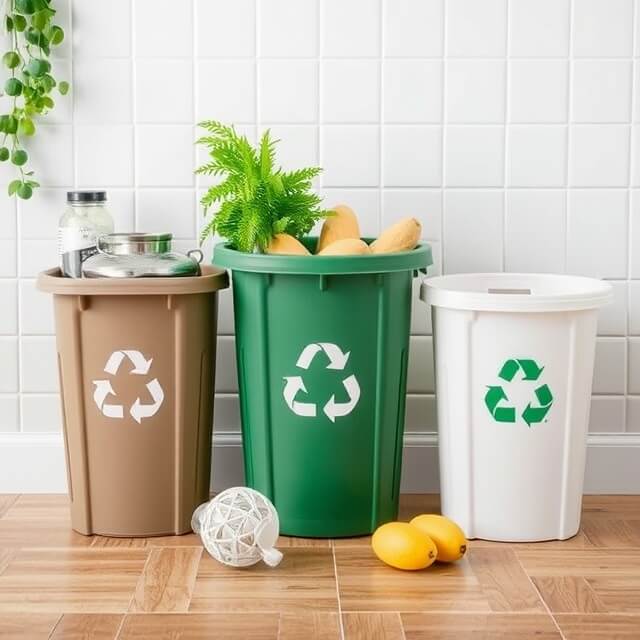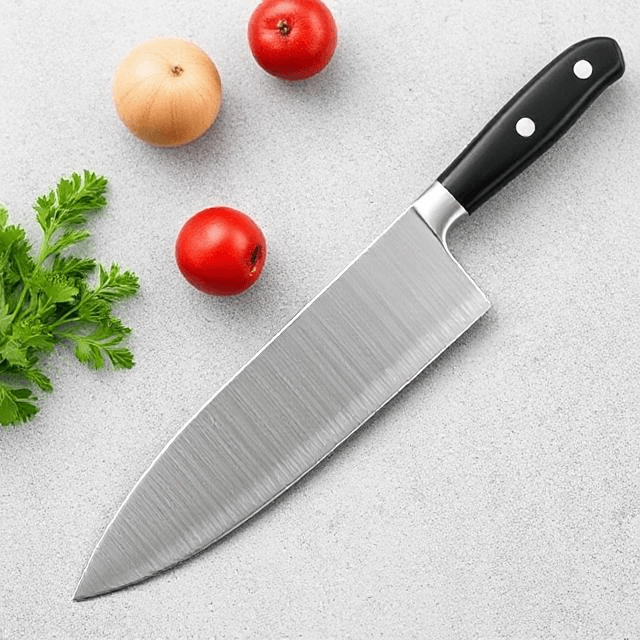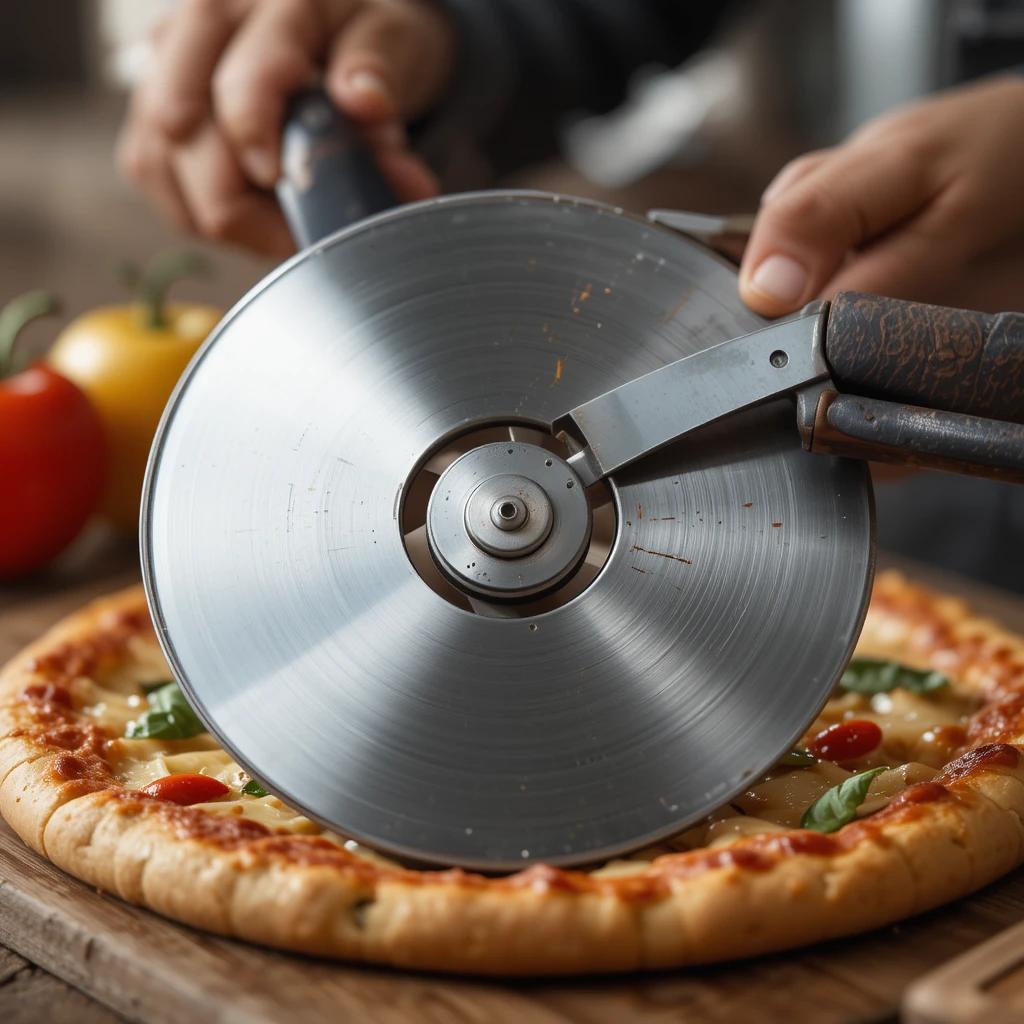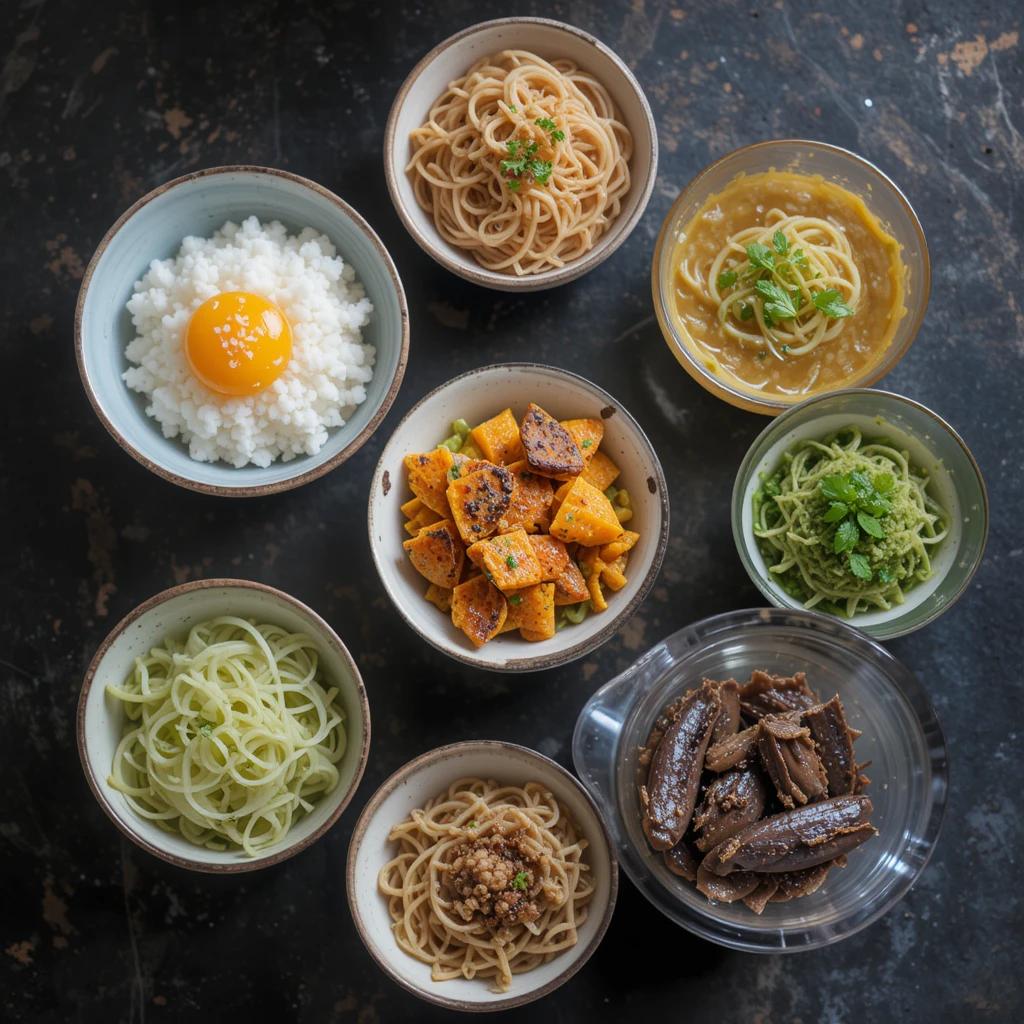Recycling is an important step toward a healthier planet, and the best way to make it simpler is at home in your kitchen. If you’ve been a weekend chef making four-star meals, a home baker nearing perfection with sourdough or a do-it-yourselfer redesigning your kitchen, choosing the best Kitchen Bins can help you recycle more efficiently and sustainably.
But not every kitchen bin is created equal. The types range from single-compartment bins to multi-purpose recycling systems, and the options are abundant. These are the best kitchen bins for recycling, plus how to organize for maximum impact You’ll discover the best ways to minimize waste, involve your family, and enact sustainable practices without sacrificing style or function.
Want To Know What Kitchen Bins Are For Recycling?
The first step in choosing the best bin for your kitchen is to understand what’s available. All these serve unique needs in a different space.
Single Compartment Bins
Ideal for small households or people who are new to recycling, single-compartment bins are straightforward and compact. They work well if you will separate recyclables later or don’t have much space.
Ideal For
- Small kitchens
- Single-person households
- Budget-conscious buyers

Multi-Compartment Bins
If you’re a serious recycler, multi-compartment bins let you divide your materials at the source by separating paper from glass and metal from plastic. Type of bin: All-in-one recyclablesType of bin: All-in-one recyclablesProfile: They’re supremely convenient and keep you from rummaging through recyclables later.
Ideal For
- Large waste-generating families
- Households hoping to maximise recycling efficiency
- Properties with sufficient kitchen area
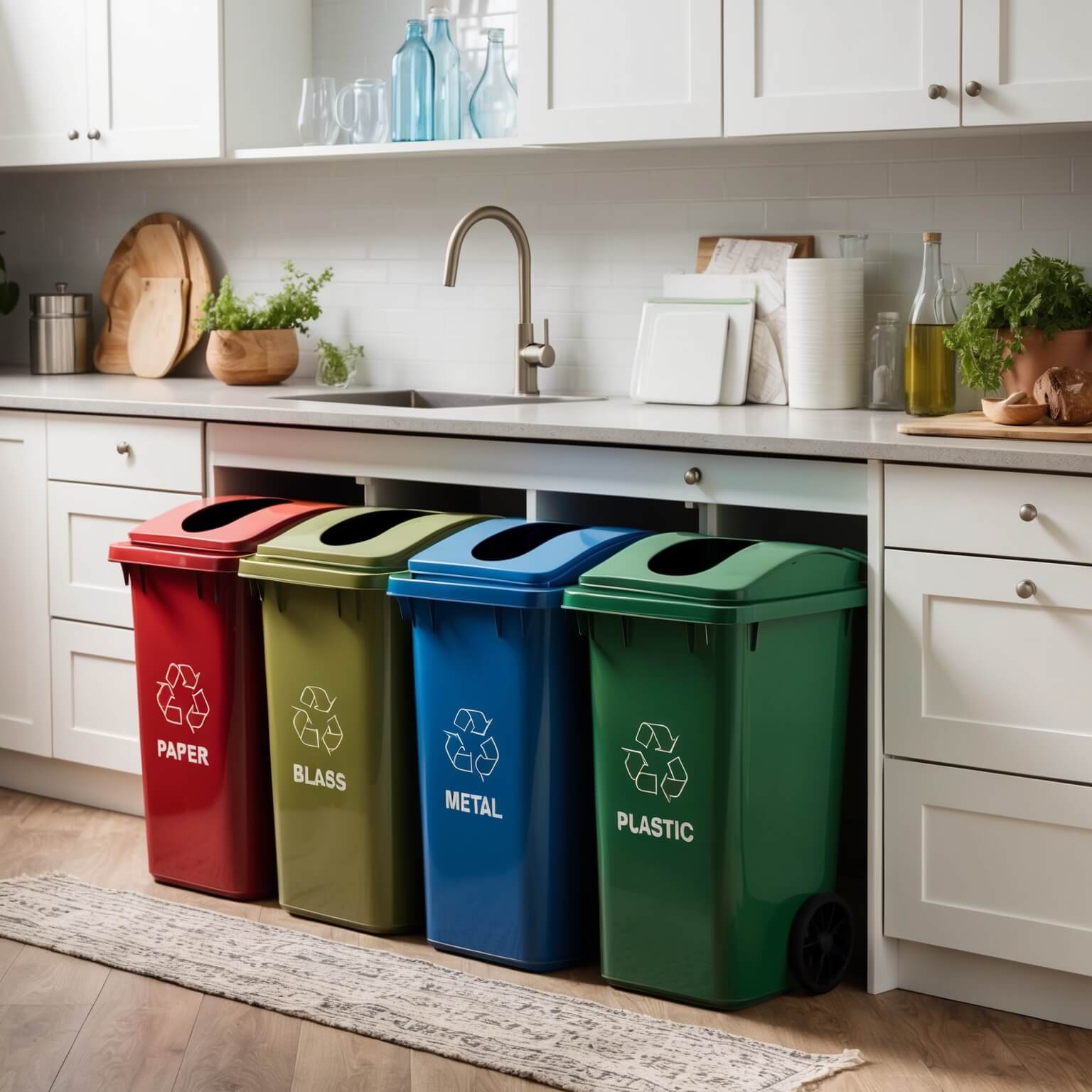
Compost Bins
If you’re serious about reducing food waste, a compost bin is your best friend. These small but mighty bins are designed to hold kitchen scraps such as vegetable peels and coffee grounds that can be composted into nutrient-rich soil.
Ideal For
- Health-conscious cooks
- Gardeners, outdoor composters
- Small-space kitchens
Features to Consider
When looking for a kitchen bin, here are the most important features to consider to ensure you make the right choice for your space and lifestyle.

Size and Capacity
Consider the scale of your regular waste and the size of your kitchen. If you cook every day, for instance, then a higher-capacity bin will serve you better. Small bins are ideal for apartments or composting.
Material
- Plastic: Insulators and budget-friendly, choose BPA-free and recycled plastic for eco-friendly options.
- Metal: Durable, elegant and often available in sleek finishes, such as stainless steel.
- Bamboo: A stylish, biodegradable, sustainable alternative.
Lid Options
The style of lid is a matter of convenience and hygiene. Common styles are step lids (pedal-operated), touch lids and swing lids. If you have compost bins, a lid that controls odor is a necessity.
Ease of Cleaning
The outside is easy to clean and the inside comes out in the form of removable compartments or bags. Choose bins with smooth, non-porous surfaces that actively resists grime and odors.
Top Eco-Friendly Kitchen Bins
We’ve rounded up some of essentially the most fashionable, practical, and sustainable kitchen bins round.

Simplehuman Dual Compartment Recycler
What: Two large compartments for trash and recycling, stainless steel body, and quiet-close lid.
- Why It’s Great: Would be great for families or serious recyclers with a sleek, high-capacity bin.
Joseph Joseph Totem Recycling Bin
- Features: Low-profile design with multiple compartments, washable carbon filter to absorb odours, removable inner buckets.
- Why It’s Great: Ideal for sleek, modern kitchens with high organizational needs.
Oxo Good Grips Compost Bin
- Specs: Compact design, odor-sealing lid, and easy-to-clean plastic interior
- Why It’s Great: A game changer for composting fans with food scraps.
Bamboozle Food Compost Bin
- Specs: Biodegradable bamboo fibre, modern design, replaceable carbon filters.
- Why It’s Great: An environmentally-friendly option that aligns with sustainable practices without compromising on looks.
An efficient system is crucial to make recycling a natural part of your everyday life.
Materials Different colours for Other
Wheel the new bin or bag in for anything that needs recycling or composting. For example, glue blue for plastics green for glass yellow for paper This way when everyone in the house is familiar with where things belong.
For Easy Identification: Labels
Use bold, clearly written labels on bins to avoid confusion. This is an excellent way to make recycling a fun, hands-on experience for your children, while also teaching them about the importance of it.
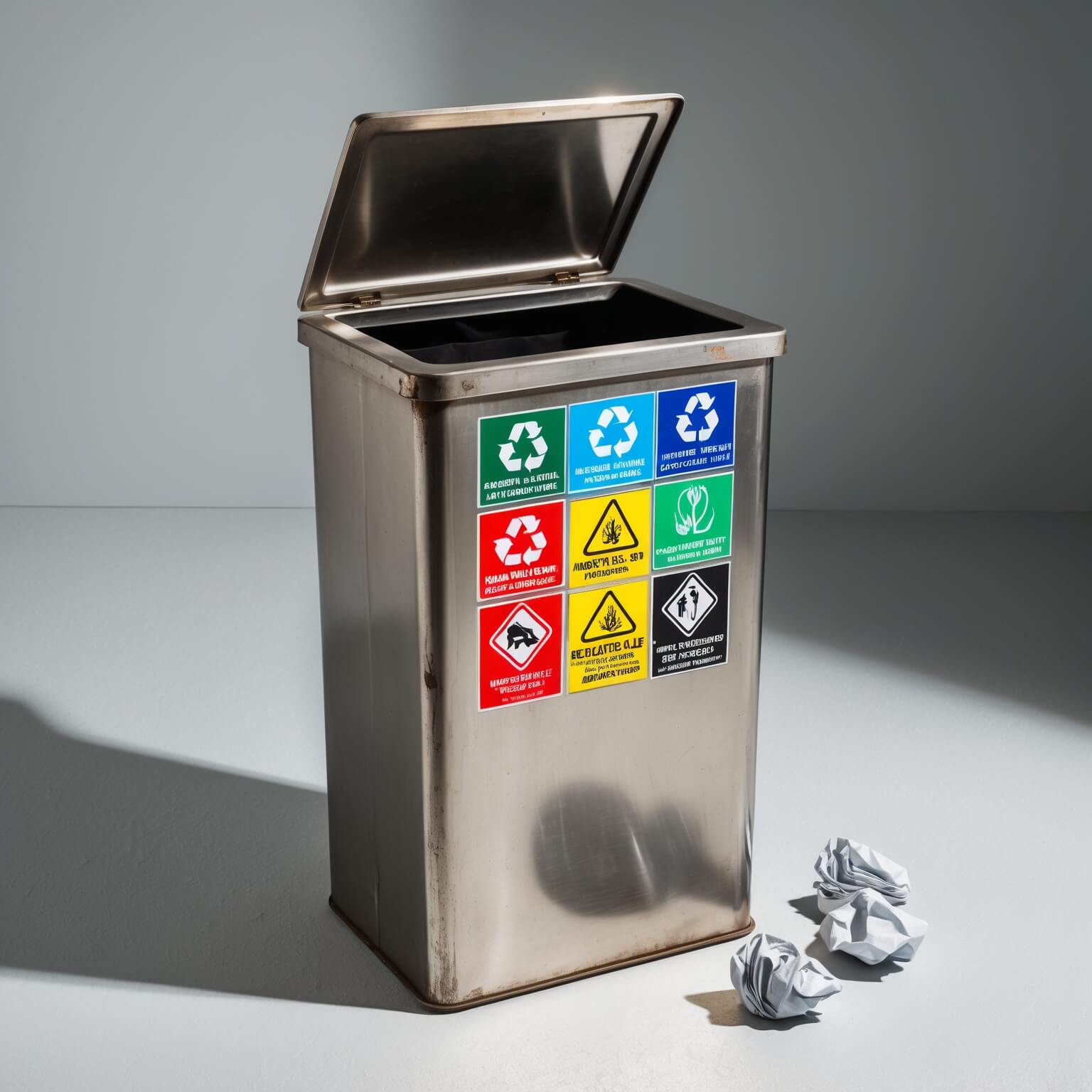
Strategic Bin Placement
Keep bins in the places where waste is generated most frequently, such as next to the sink, underneath the counter or with your prep. For compost bins, keep them near your cutting board or cooking area.
Advantages of Using Environmentally Friendly Bins
Having eco-friendly kitchen bins can do more for you than just look good and offer functionality; it can work toward a more sustainable you.
Reducing Waste
“Eco-friendly bins encourage them to spend more attention to how they separate the trash, and as a result, they throw out less garbage.” Coupled with composting, that can greatly reduce your household’s carbon footprint.
Promoting Family Involvement
With visually interesting bins in an organized system, they can motivate the entire family to get involved with recycling. Make it a family thing and watch how fast it becomes a habit!
Supporting Sustainable Brands
Using eco-friendly products contributes to supporting brands that are focused on sustainability and thus leads to more environmentally produced products.
Simplify Recycling (and Life)
With the right recycling system, you can turn your kitchen into a model of sustainability and efficiency. Select a bin that works for you, and you’ll streamline recycling and keep people interested in doing it, helping to create a healthier planet. Whether you want a one-compartment solution, a full-fledged multi-recycler or an artful compost bin, there is an option for everyone.
Try small, keep steady, and do not discount the ripple effect this slight modification can have in your family and also, away.
Ready to up your recycling game and splurge on an eco-friendly kitchen bin? So pick one, and start taking action now!
FAQ
The best kitchen bin depends on your needs:
Pedal bins – Hands-free and hygienic.
Dual-compartment bins – Ideal for separating recycling and general waste.
Compost bins – Perfect for organic kitchen waste.
Kitchen waste is typically thrown into:
General waste bins for non-recyclable items.
Compost bins for food scraps.
Recycling bins for plastics, glass, and paper.
Use a separate recycling bin for plastics, glass, and paper.
Install pull-out bins in cabinets for space-saving storage.
Rinse recyclables before placing them in the bin to prevent odors.
Food scraps can be composted for gardening.
Glass, plastic, and paper should go in the recycling bin.
Used cooking oil can be taken to recycling centers instead of pouring it down the drain.
Organic waste (food scraps, vegetable peels).
Recyclable waste (glass, plastic, paper).
Non-recyclable waste (plastic wraps, styrofoam)

